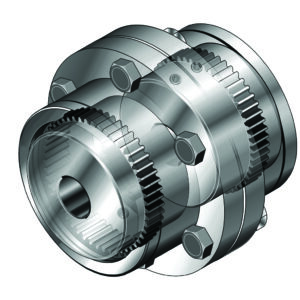If you're in the manufacturing, construction or engineering industry, you've probably heard of gear couplings. But what exactly are they and how do they work? In this article, we'll dive deep into gear couplings and explore their working principle, design, applications, and advantages.
Understanding Gear Couplings
Gear couplings are mechanical devices that are designed to transmit torque between two non-collinear shafts. They are widely used in applications where high torque transmission is required, and shaft misalignment is inevitable. Gear couplings consist of two flexible joints, each fixed to one shaft, which are connected by a spindle or a third shaft. They provide a reliable and efficient way to transmit power between two shafts.

How Do Gear Couplings Work?
Gear couplings use a unique design to transmit torque between two non-collinear shafts. The coupling consists of two hubs with crowned gear teeth that are in permanent mesh with the straight gear teeth of the sleeves. The hub and sleeve are connected by a spindle, creating a flexible joint that compensates for angular, radial, and axial shaft misalignment.
When the driving shaft rotates, it causes the hub to rotate, which in turn rotates the sleeve through the meshing of the gear teeth. This rotation of the sleeve transmits the torque to the driven shaft, causing it to rotate at the same speed as the driving shaft.
Gear Coupling Design
The design of gear couplings plays a critical role in their performance. Gear couplings are designed to provide the highest torque transmission for the smallest size, making them an ideal choice for applications where space is limited. They also run at high speeds, conform to the AGMA bolting pattern, and compensate for shaft misalignment.
One of the essential features of gear couplings is the crowned gear teeth on the hubs. The crowned gear teeth reduce the stress concentration at the tooth root, which increases the coupling's torque capacity and reduces wear on the gear teeth. The sleeves of gear couplings have straight gear teeth that are in permanent mesh with the crowned gear teeth of the hubs.
Gear couplings also feature a flexible design that compensates for shaft misalignment. The spindle connecting the hubs and the sleeve allows for angular, radial, and axial misalignment. This flexibility allows gear couplings to operate efficiently even when the shafts are not perfectly aligned.
Applications of Gear Couplings
Gear couplings are widely used in industrial applications, including mining, paper mills, cement plants, and steel mills. They are commonly used in hoist mechanisms to connect the drive motor to the gearbox. Gear couplings can also connect the gearbox directly to smaller wire rope drums using a flanged half.
Advantages of Gear Couplings
Gear couplings offer several advantages over other types of couplings. They provide high torque transmission for the smallest size, making them an ideal choice for applications where space is limited. They also run at high speeds, making them suitable for high-speed applications. Gear couplings compensate for angular, radial, and axial misalignment, which reduces wear on the equipment and increases its lifespan.
Conclusion
Gear couplings are an essential component in many industrial applications. They provide a reliable and efficient way to transmit torque between two non-collinear shafts while compensating for shaft misalignment. Their unique design allows for high torque transmission for the smallest size, making them ideal for space-limited applications. Gear couplings are also suitable for high-speed applications and offer several advantages over other types of couplings.